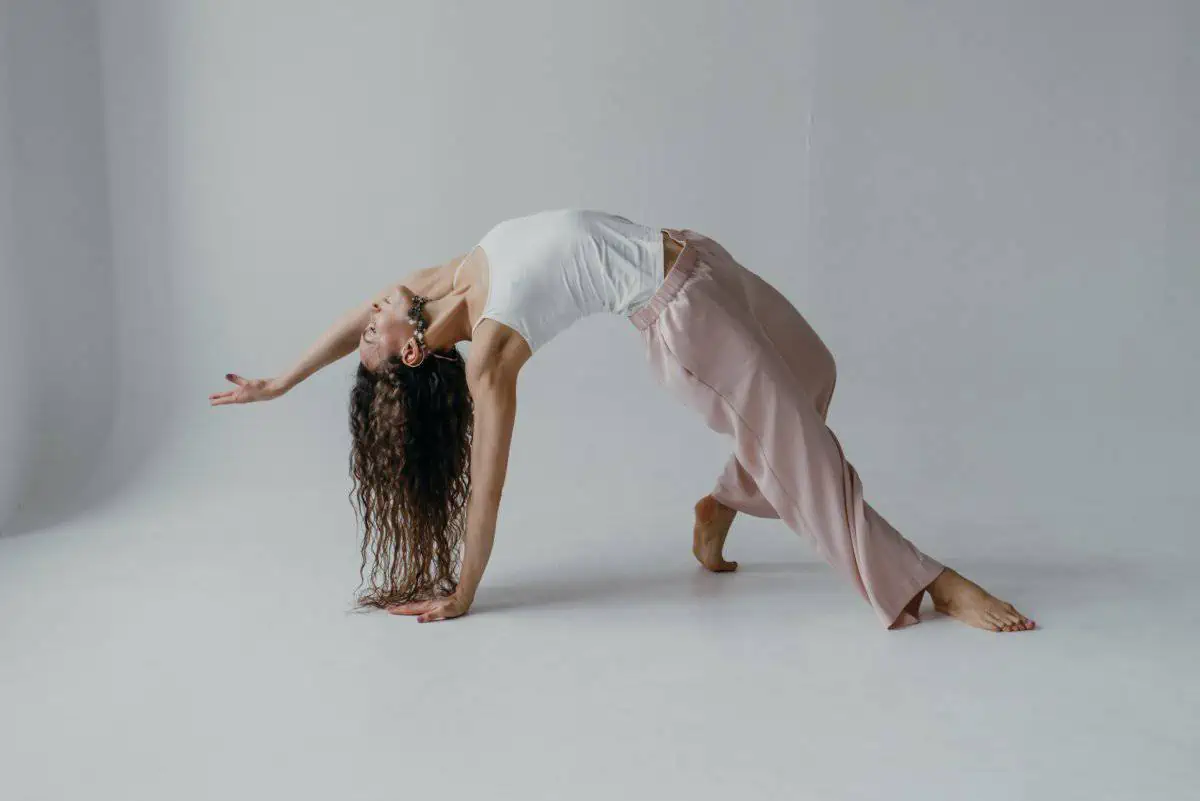Key Takeaway
Wild Thing Pose, or Camatkarasana, is a multifaceted yoga asana that strengthens and opens the body, offering physical, mental, and energetic benefits, including improved strength, flexibility, and heart chakra stimulation.
| WILD THING POSE | |
|---|---|
| Alternate name: | Camatkarasana |
| Difficulty level: | Intermediate |
| Pose category: | Backbend Inversion Balance |
| Muscle groups: | Pectoralis major (chest) Deltoids (shoulders) Triceps brachii (upper arms) Latissimus dorsi (mid-back) Serratus anterior (ribs/upper back) Rectus abdominis (abdomen) Obliques (side torso) Hip flexors (hips) Quadriceps (front thighs) Gluteus maximus (buttocks) Hamstrings (back thighs) Erector spinae (lower back) |
| Physical benefits: | Strengthens upper body and legs; increases spinal flexibility and mobility. |
| Therapeutic applications: | Strengthens upper body and legs; increases spinal flexibility and mobility; aids in digestion; boosts energy and improves proprioception. |
| Preparatory poses: | Puppy Pose (Uttana Shishosana) Bridge Pose (Setu Bandhasana) Side Plank Pose (Vasisthasana) |
| Counterposes that follow well: | Child's Pose (Balasana) Savasana (Corpse Pose) |
| Chakras activated: | Heart Chakra (Anahata Chakra) Throat Chakra (Vishuddha Chakra) Sacral Chakra (Svadhishthana Chakra) |
| Most helpful prop: |  Yoga block under hand - increases stability and support. See latest price |
One of the most beautiful things about yoga is how it teaches us to balance strength and openness in a graceful, grounded way. The ultimate embodiment of this concept is the dynamic yet elegant posture Wild Thing Pose!
Camatkarasana, as it is called in Sanskrit, combines elements of an arm balance, backbend, inversion, and balance, making this an intermediate yoga pose. The Sanskrit name comes from the word “camatka,” meaning “miracle” or “surprise.” But, not all Sanskrit words are understood through a literal translation. We interpret the name Camatkarasana to be “the ecstatic unfolding of the enraptured heart.” Isn’t that beautiful?
You might also hear your yoga teacher cue you to “flip your down dog,” since that is a common way to enter Wild Thing Pose. However, don’t get that confused with a variation of the pose known as Flip Dog Pose! (Don’t worry, we’ll explain it all — just keep reading!)
Typically, you’ll encounter Wild Thing Pose as part of a yoga sequence where you flow between poses, and especially in yoga classes that focus on chest, shoulders, or heart-opening poses to focus on the energies of the bodies (known in yoga philosophy as the chakras).
Wild Thing is a powerful asana that will add variety and depth to your yoga practice in a number of ways.
Contents
Benefits of Wild Thing Yoga Pose
Camatkarasana, or Wild Thing Pose, combines many different elements and thus has a profound effect on the body — physically, mentally, and energetically. Here is what you can expect to experience when you practice Wild Thing Pose.
Physical Benefits
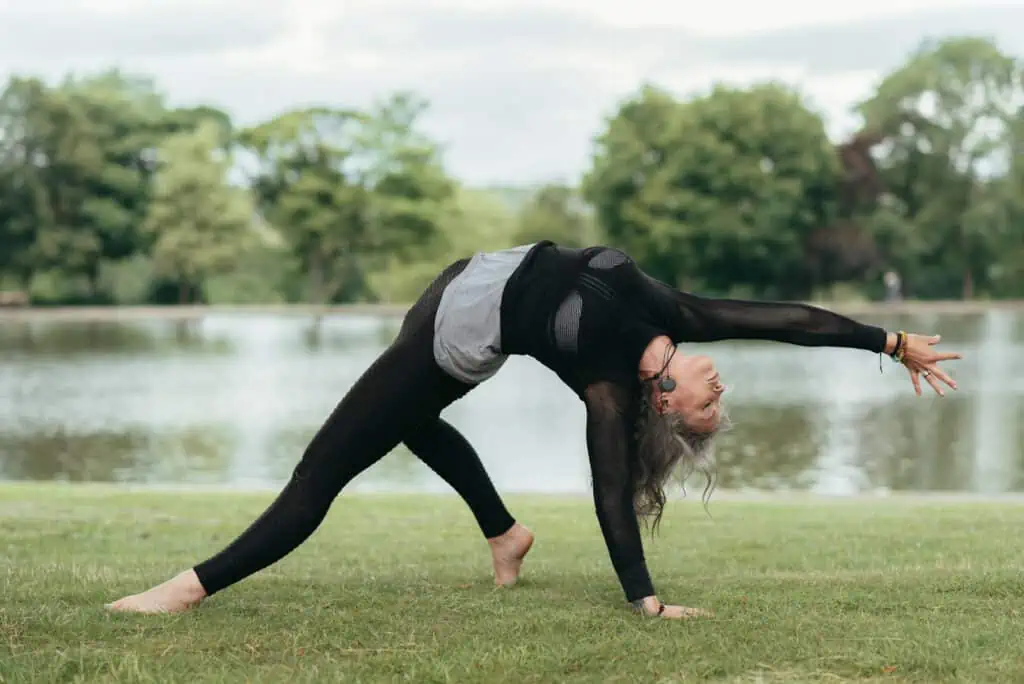
- Strengthens the upper body and legs
- Opens the shoulders, chest, and hips
- Lengthens the entire front body, including the abdominal muscles and hip flexors
- Tones the core muscles
- Increases spinal flexibility and mobility
- Improves blood circulation
- Promotes easier breathing and improves lung capacity: stretching the intercostal muscles on the sides of your rib cage allows the lungs more space to expand
- Aids in digestion through the deep stretch of the abdomen
Energetic and Mental Benefits

- Boosts energy, stimulating your energy flow significantly around the Heart Chakra, as well as the Throat and Sacral chakras; these energy points are associated with building self-confidence and promoting feelings of love and gratitude
- Improves proprioception, building balance, concentration, and mind-body coordination
- Shifts perspective and encourages open-mindedness
How To Practice Wild Thing Yoga Pose
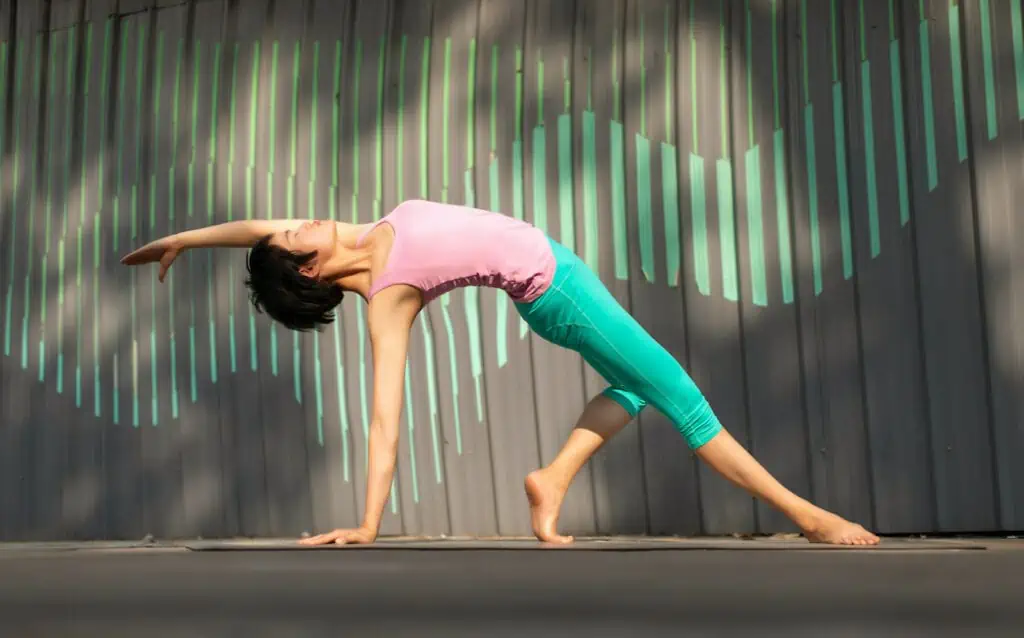
Wild Thing Pose is an intense full body stretch as well as a backbend. So, it is essential that your entire body is warmed up before practicing this posture. We recommend taking yourself through some rounds of Cat and Cow stretch as well as a few Sun Salutations, in addition to the preparatory poses suggested below.
The most common way to enter Wild Thing Pose is from Downward Facing Dog, more specifically the three-legged version of Downward Dog. You’ll find a very brief description of this starting position in the step-by-step instructions below; however, if you are in need of more detailed directions, be sure to visit our How to Do Downward Dog Article first.
Note: you may also enter Wild Thing from Side Plank Pose. Read on to the “Preparatory Poses” section of this article for a brief description of the Side Plank method!
To Enter Wild Thing Pose from Downward Facing Dog:
- Begin in Downward Facing Dog: from your hands and knees (Table Top), tuck your toes and straighten your legs, sending your hips and sitting bones skyward. With your arms straight, press your chest back toward your thighs and reach your heels toward the floor.
- Next, bring yourself into Three-Legged Down Dog: split your legs as you sweep your right leg up. Keep your left leg straight and your left foot planted.
- Bend your upper leg and take your right knee up toward the sky. Your right hip will open as you drop your right foot towards the left side of your body.
- Shift your weight into your left hand; press your left hand firmly into the ground while lifting up and out of your left shoulder joint.
- Pivot your left foot onto the outer edge as you slowly lower your right foot down to the floor with control. Keep twisting and opening through your torso. Allow your right hand to lift off the mat as your chest opens to the sky.
- Come onto the ball of your right foot, with your right heel lifted and your knee bent. Keep your left leg extended, still grounding down through the outer edge of your left foot.
- Reach your right arm over your head. Let your head drop back, gazing toward the fingers of your right hand. Or, bend your right arm and bring your hand to the back of your head. Press your hips up and draw your shoulder blades together to deepen the back bend aspect of the pose.
- Feel your entire front body open as your body creates one big, beautiful arc: from the outer edge of your planted foot, along the front of your weight-bearing leg and hip flexors, your torso and chest, to the top of your head and the fingertips of your reaching arm. (This is the “ecstatic unfolding” described the posture’s Sanskrit name!)
- Stay in your Wild Thing Pose for several deep breaths, feeling the sides of your rib cage expanding as you breathe.
Exiting Wild Thing Pose
Here are two different options for coming out of Camatkarasana, or Wild Thing Pose.
- Option 1: From Wild Thing, you can simply reach your right arm up overhead and gently lower your hips to the floor, then extend your bent leg to come into Staff Pose.
- Option 2: To return to Downward Facing Dog, press into your left hand and left foot, engage your core and left from your left side body and rotate your upper body towards your mat on the floor. Lift your left heel and pivot on your left foot as you raise your right foot and leg to bring your lower body back in alignment with both hips level, tailbone towards the sky. Release your right foot to your mat to return to Downward Facing Dog.
You might choose to rest in Child’s Pose for a few breaths, or move directly to your other side, taking your left leg up from Downward Dog, flipping over to your right and reaching your left arm overhead.
For a quick and concise visual demonstration, you can check out this video:
Contraindications
There are many different elements to Wild Thing — it is an asymmetrical, inverted, back-bending pose which calls for a considerable amount of strength and balance. Understandably, there are specific medical conditions that affect your ability to practice this pose safely and without injury. If you are experiencing any of the following medical issues, skip Wild Thing or use one of the modified poses detailed below (after consulting a medical professional).
- Various injuries to wrists, shoulder joints, neck, elbows, and back
- Carpal tunnel syndrome: putting weight on your outstretched arm puts pressure on the elbow and wrist, which can compress the median nerve and worsen symptoms of carpal tunnel syndrome
- Migraine or other headaches
- High blood pressure or heart issues
Modifications and Variations for Wild Thing Pose (Camatkarasana)
Wild Thing Pose requires openness and strength throughout the whole body. If you are a beginner to yoga, or are unable to practice inversions at this time, here are some poses you can do in place of Wild Thing. Practicing each of these poses regularly will also help you build strength and flexibility, if working up to Camatkarasana is a goal for you in your yoga practice.
Reverse Table Top
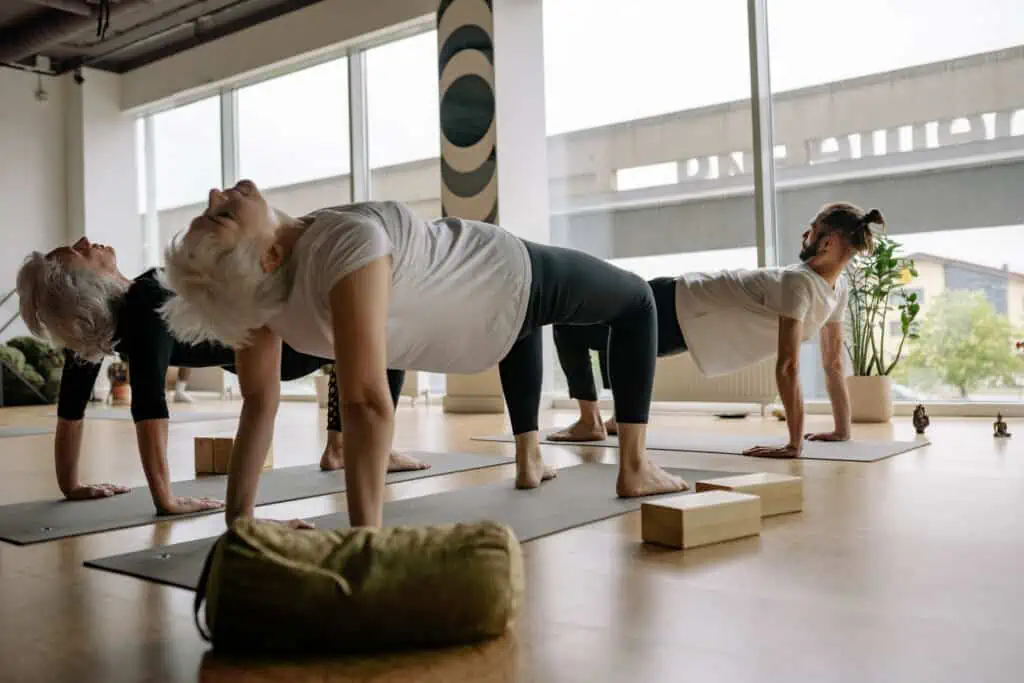
Reverse Table Top will lengthen your hip flexors, open your chest, and help you build strength in both your back body and upper body.
- Begin seated on your yoga mat. Bend your knees and plant your feet about 2-3 feet in front of you, with your toes pointing forward.
- Bring your hands to the floor just behind your hips. Ground your palms into the floor with your fingers pointing forward. Your hands should be more or less underneath your shoulders.
- Press down through your hands and feet as though you are pushing the floor away from you. Contract your glutes and lift your hips. Your knees should be bent at about a 90-degree angle, creating a squared-off shape with your torso and arms.
- Squeeze your shoulder blades together to open across your chest. Turn your chin up slightly and take your gaze up.
- Hold for 3-5 breaths, then gently lower yourself back down to your mat.
Half Camel Pose
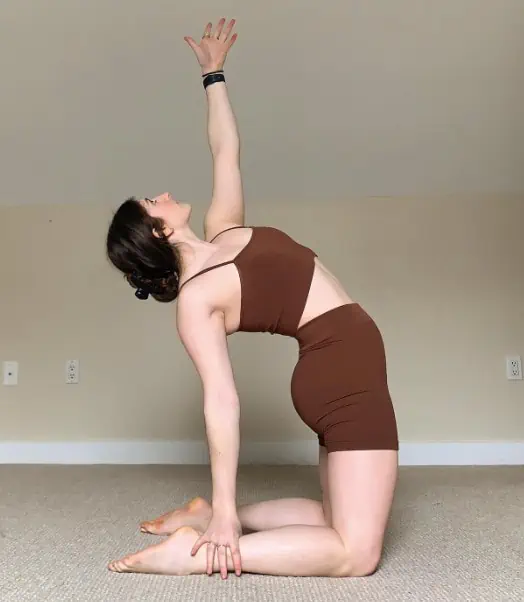
This Camel Pose variation will give you a similar asymmetrical front-body stretch without placing so much weight on the joints of your supporting arm, making it a great alternative to Wild Thing if you are recovering from a wrist, elbow, or shoulder injuries.
- Begin in a kneeling position, with your shoulders and hips stacked over your knees. Tuck your toes for more stability, as if your feet are kickstands.
- As you inhale, reach both arms up over your head. With your exhale, sweep your right arm behind you, opening your right shoulder. Reach your right hand back to your right foot, placing your palm onto your right heel.
- Keep your right arm straight and press your thigh bones forward, aiming to stack your hips over your knees. With your left arm reaching up, shine your heart up to the sky as you squeeze your shoulder blades together.
- If you feel your neck needs a bit more support, bend your left arm and bring it to the back of your head. Hold your Half Camel Pose for 3-5 breaths. Then, return your torso to a straight and upright position. Lower your hips down to sit on your heels and rest for a couple breaths; then, repeat Half Camel on your other side, opening to your left with your right arm reaching up.
Half Wild Thing
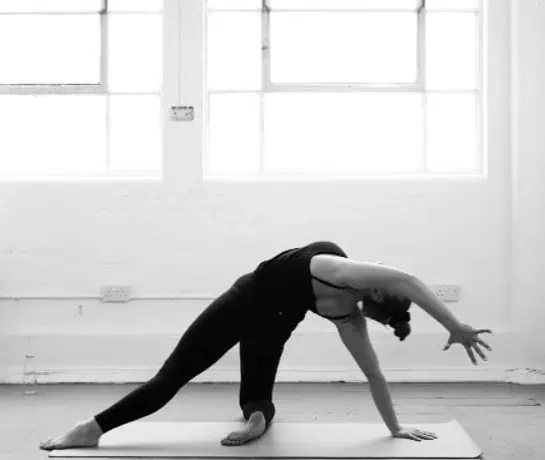
If you feel you lack strength your side body, shoulder girdle, or arms, try this beginner-friendly version of Camatkarasana to help yourself build up strength and confidence before progressing to the full version of the pose!
- Begin as you would set up for Gate Pose: from an upright kneeling position — shoulders and hips stacked over your knees — extend your right leg out to the side, with your toes turned in (pointing the same way your upper body is facing).
- Reach both arms up as you inhale. With your exhale, bend from your waist away from your extended right leg. Reach your right arm out to the side and place your palm flat on the floor.
- Reach your right arm up and over towards your left, feeling a stretch in the right side of your body.
- To practice more of a backbend in this position, press your hips forward to stack them over your left knee. Bend your right elbow, bringing your right hand to the back of your head.
- Let your head drop back into your hand, and open your chest to the sky.
- Hold your Half Wild Thing for 3-5 deep breaths. Then, use your core strength to bring your torso to an upright position. Bend your right leg back in to return to your beginning kneeling position. Switch sides, extending your left leg out and bending away from your straightened leg.
Flip Dog Pose

Although you may have heard your yoga teacher use Flipped Dog Pose interchangeably with Wild Thing Pose, there is a variation by this name with a subtle difference. Flip Dog or Flipped Dog Pose is slightly more symmetrical than Wild Thing, with both feet planted and one arm reaching behind you.
Simply enter Wild Thing Pose in the same method as described above. Then, step the foot of your extended leg back to be aligned with your other foot. Now, both legs are bent at about a 90-degree angle, similar to Reverse Table Top.
If you’re feeling adventurous, this position works well as a transition into Wheel Pose!
Preparatory Poses
These yoga poses are the best way to prepare your body for Wild Thing Pose. The purpose of these poses it to warm up your shoulders, open the chest, and build strength in your arms and side body.
Puppy Pose
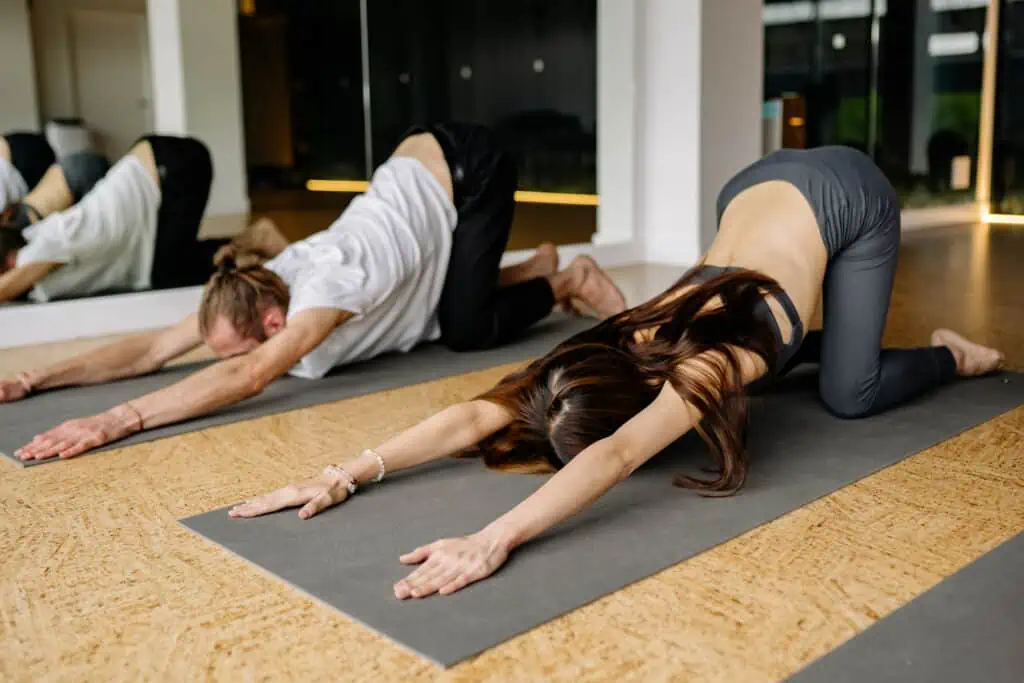
If your shoulders and back are tight, you’ll likely find it difficult to experience that “ecstatic unfolding” of opening the heart space in Wild Thing. Practicing Puppy Pose is the perfect way to stretch and release your upper back.
Need a refresher on this juicy shoulder opener? Check out our Puppy Pose guide for detailed instructions.
Bridge Pose
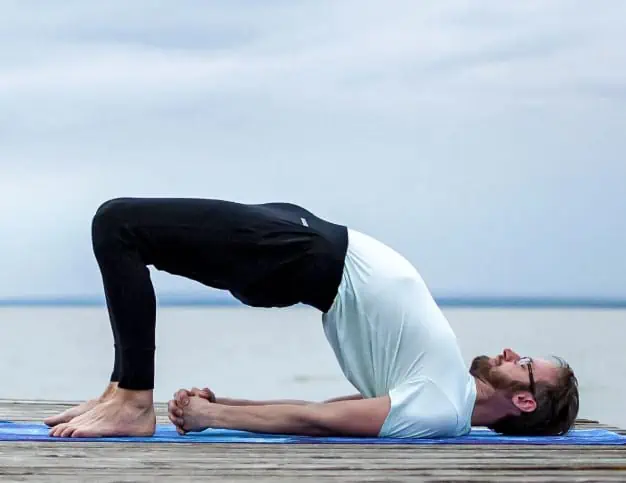
Bridge Pose is a fantastic way to prepare for Wild Thing for a couple reasons. It strengthens and activates your lower body, while taking you into a more gentle backbend to warm up your spine. For proper alignment and instructions, be sure to visit our detailed Bridge Pose guide!
Side Plank Pose
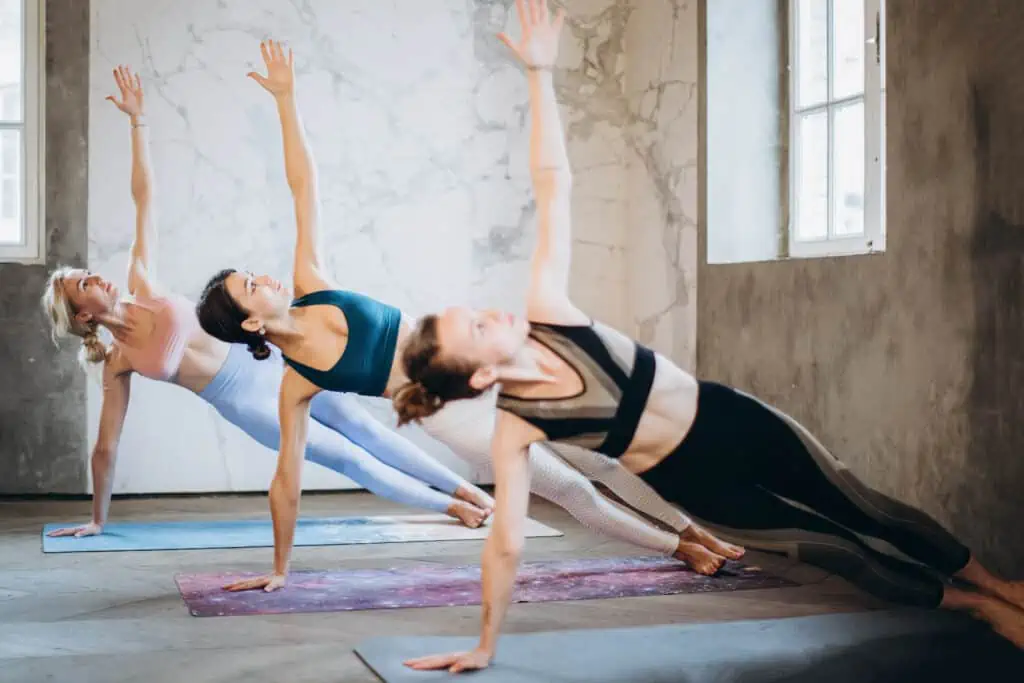
This Plank variation will help you strengthen your arms, shoulders, and will bring awareness to your side body, activating your abdominal obliques.
- Come into Plank Pose (the top of a push-up): from Table Top, step your feet back one at a time. Keep both legs straight and pull up on your kneecaps so the muscles of your legs are active. Lift up and out of your shoulders and widen your shoulder blades across your upper back.
- Start to shift your weight into your left hand. Rotate your body open to the right, pivoting on the balls of your feet until you place the outer edge of your left foot on the ground. Stack your right leg on top of your left, and align your right hip over your left.
- Lift from your lower side body, engaging the external oblique muscles on your left side. Reach your right arm up towards the sky.
- Hold your Side Plank for 30-45 seconds, then rotate back to Plank Pose and repeat Side Plan on your second side.
If you feel warm and ready, you can try entering Wild Thing Pose from your Side Plank! Here’s how:
- From Side Plank, float your top leg up. Bend your leg and rotate your torso open more, with both hips and the front of your body facing up. Place your right foot down behind you with the ball of the foot on the floor, heel lifted.
- Look up and reach your top arm overhead, gazing towards your finger tips. Press the floor away through the planted foot and your weight bearing hand, lifting your hips and chest to the sky in a backbend.
- Hold for a few deep breaths. Then, lift your back foot, extend your leg and return to Side Plank. Rotate your body towards your mat as you pivot on the balls of your feet and lower your top arm. Plant your right hand and you are back in Plank Pose. Move into Side Plank with your right hand planted and left leg stacked over your right, and try entering Wild Thing Pose on your second side.
Follow Up Poses To Practice after Wild Thing
Child’s Pose
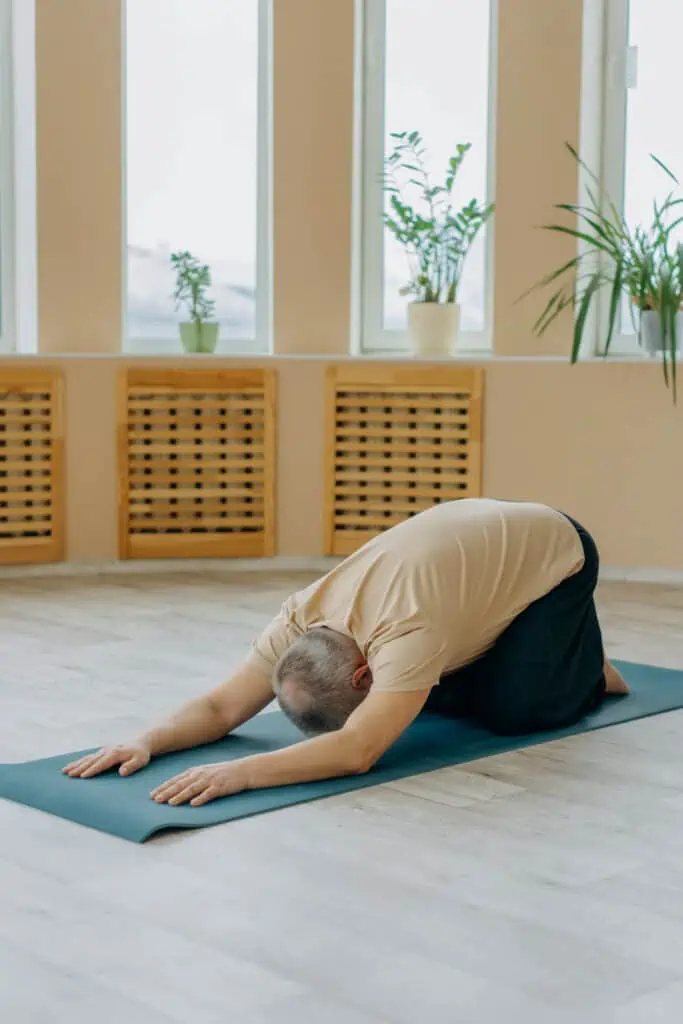
Wild Thing calls for strength from your back and upper body, which makes Child’s Pose the perfect follow-up posture. This is the perfect counter pose for any backbend, as it stretches and relaxes your back muscles. Want to know more about Balasana? Head over to our pose breakdown article here.
Savasana
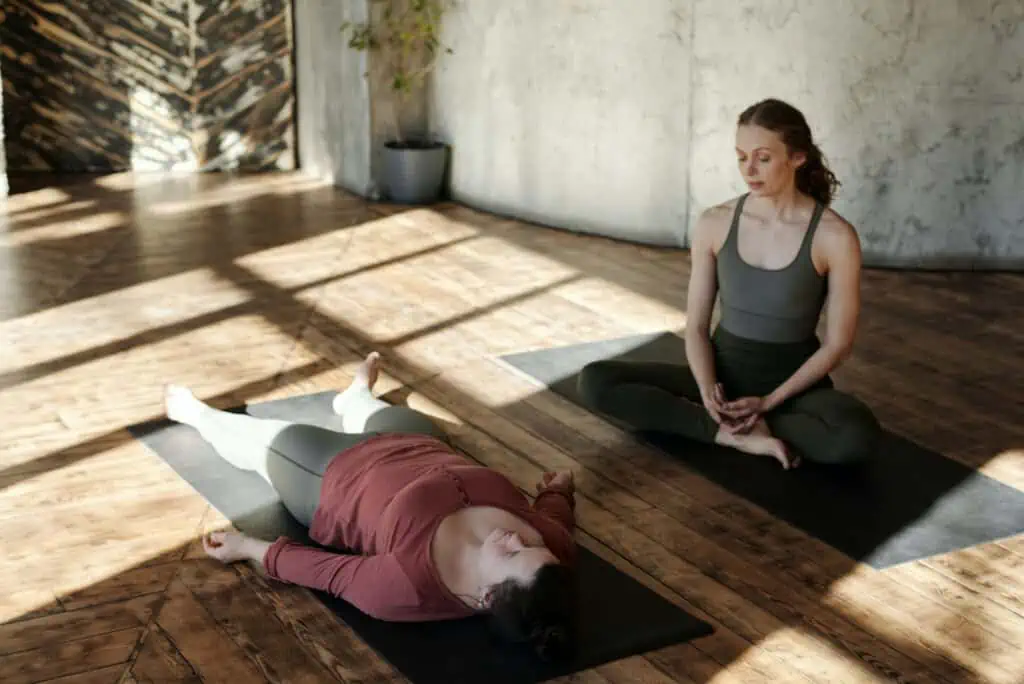
As with any backbend or heart-opener, Savasana is always an excellent choice for a counterpose. It allows your spine to return to a neutral position, while giving your body time to integrate all the energetic benefits of a heart-opening yoga pose. To learn more about all the amazing benefits of this ultimate resting pose, check out our Savasana (Corpse Pose) guide!
Common Questions About Wild Thing Pose
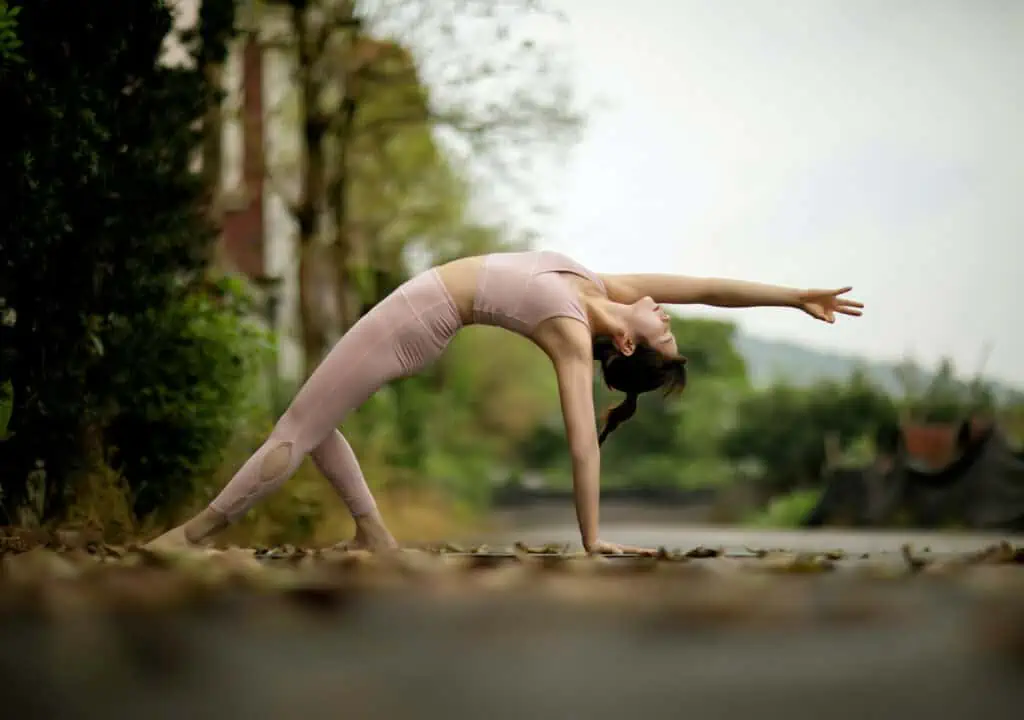
Is there a difference between Wild Thing and Flip Dog Pose?
Short answer: yes and no! Some teachers may use Wild Thing, Camatkarasana, Flip Dog, or Flipped Dog Pose interchangeably. However, as we’ve detailed above in the “Modifications and Variations” section of this article, there is a less common, more symmetrical version of this posture known as Flip Dog that may be used in transition into Wheel. Try out both ways and see what feels better in your body!
Can I do Wild Thing Pose if I am a beginner?
While Wild Thing is considered an intermediate and even sometimes advanced posture, that doesn’t mean you can’t try it out as a beginner! However, you must be sure you are properly warmed up, have adequate strength in your upper body, as well as flexibility in the upper body and spine. Start with the preparatory poses detailed above, then work your way through Reverse Table Top and Half Wild Thing Pose. If you feel strong, comfortable, and confident, there’s no reason you shouldn’t be able to give the full pose a try!
Can I use props to modify Wild Thing Pose?
Most yoga poses can be modified using props like yoga blocks, blankets, and bolsters. For this pose, however, the most effective modifications are to the position of the body itself. You can achieve the same position of open hips and chest with other backbends if you are limited in your range of motion or recovering from an injury.


